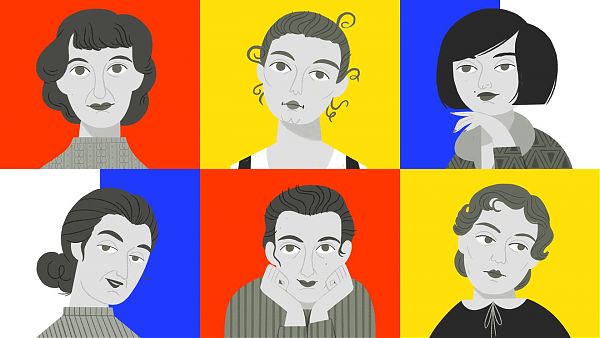Celebrating six trailblazing Bauhaus women

Illustrations by Ellen Surrey.
Walter Gropius published the founding manifesto of the Bauhaus in Weimar in 1919. Both the Lyonel Feininger woodcut of a cathedral on the cover and the first line of the four-page leaflet exalted architecture: “The ultimate aim of all visual arts is the complete building!” he wrote. “Architects, painters, and sculptors must recognize anew and learn to grasp the composite character of a building both as an entity and as separate parts.” Gropius’s new school would reunite craftsmen and artists in the modern era, allowing them to work in tandem toward a common goal as they had building medieval cathedrals.
But collaboration, and craft, didn’t mean an end to old hierarchies. If the ultimate goal was the building, then the architect (all of the directors of the Bauhaus were, in fact, architects) would sit on top of the design hierarchy. When we think of the Bauhaus today, the image is often still a building: the one Gropius designed for the second incarnation of the school, in Dessau. It is only as we look to the interiors of that building—to its lamps, to its curtains, and to the credits on the photographs of all of the above— that we can see the work of women.
As Sigrid Wortmann Weltge writes in the introduction to her book Women’s Work: Textile Art from the Bauhaus, female students “arrived at the school with an astonishing diversity of talents, convinced that this avant-garde institution would accept them as equals.” Alas. Many of these students had already studied art elsewhere—and they were eager to learn from masters like Paul Klee, Wassily Kandinsky, and László Moholy-Nagy—but “they were segregated and given their own workshop, the Weaving Workshop, regardless of talent or inclination,” Weltge writes.
On Twitter
Follow @LangeAlexandraOn Instagram
Featured articles
New Angle: Voice
Getting Curious with Jonathan Van Ness
New York Times
New Yorker